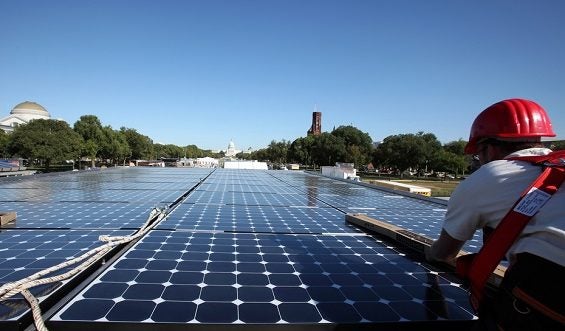Bumps in the road: Utilities get in the way of New York’s clean energy vision

New York’s REV (Reforming the Energy Vision) program has been an ambitious and groundbreaking initiative, but it may be falling short of its full potential. This conclusion comes after decisions by the state’s Public Service Commission (PSC) concerning New York’s community solar efforts. Solar supporters are concerned the PSC’s process to determine the value of solar energy resulted in a decision that makes it difficult for community solar projects to get built.
In March, the PSC began a process to determine how solar from community solar-sized systems would be valued. The order set up a structure to determine the value of solar generated from community solar systems. It created five “value stack” categories.
Energy value: a reference to “avoided energy,” which is the offsetting of purchases of wholesale electricity that the state’s utilities, if solar power didn’t exist, would need to make to meet the energy needs of customers.
Capacity value: a reference to “avoided capacity,” which is the ability of utilities to offset the cost of the construction of backup power plants and other resources to maintain consistent power to customers, for which they would have to pay, were it not for solar power.
Distribution System Value (D Value): the ability of utilities to offset the cost of such infrastructure as poles, wires and substations, which, without solar, would be necessary to send electricity from power plants to customers.
Environmental value: the cost to society of greenhouse gases and other pollutants, which solar power helps avoid.
Market transition credit: an incentive credit created to capture values not reflected in the formulas used to estimate the other components, and to make sure that the industry continues to grow during the transition from net metering.
What was missing from this order was the formulas that would be used to determine the value of solar. The result from the PSC’s March order muddied the picture for solar developers in New York. While utilities were no longer required to pay developers the net metering credit rate for the electricity generated from community solar systems, the developers would still have to pay community solar subscribers at the net metered rate. John Farrell of the Institute for Local Self-Reliance said this order limits the financial viability of these projects and would require developers to increase their income in other ways, such as raising upfront subscription costs.
After this first order, solar advocates waited to see if later determinations by the PSC would bring clarity to the New York rates issue. But when the PSC released a new order in September – the Phase One Implementation Order – these advocates were deeply disappointed.
The main sticking point is the Value of Distribute Energy Resources (VDER). Miles Farmer of NRDC argues that the PSC order “does not match” the REV program’s vision. He says the Commission “approved flawed utility proposals that undercount the value of solar resources”.
According to Farmer, the utilities failed to include crucial factors in their computation of VDER in their proposals to the PSC. This created a distortion of solar’s value. Part of that value, he explained, is based on the degree to which solar power helps utilities avoid having to invest in traditional infrastructure. This includes things such as substations, poles and wires. This is the Distribution System Value, or “D” value of solar. The utilities that submitted proposals to the commission calculated the VDER based upon a very narrow range of electricity infrastructure, such as trunkline feeders. Farmer and other solar advocates maintain that the range of affected infrastructure cited in the proposals ought to have been much wider.
Despite these setbacks, Farmer is still somewhat optimistic going forward. Phase 2 of the ratemaking process has already begun. Farmer believes the commission should order the utilities to fix mistakes in its ratemaking formula in that phase.
“It remains possible that the Commission’s [September] order will be nothing but a slight bump in the road to a clean energy future for New York,” Farmer is quoted as saying. “But for that to happen, New York must do more to ensure that its policies in fact enable the achievement of [REV’s] clean energy and climate goals.”
